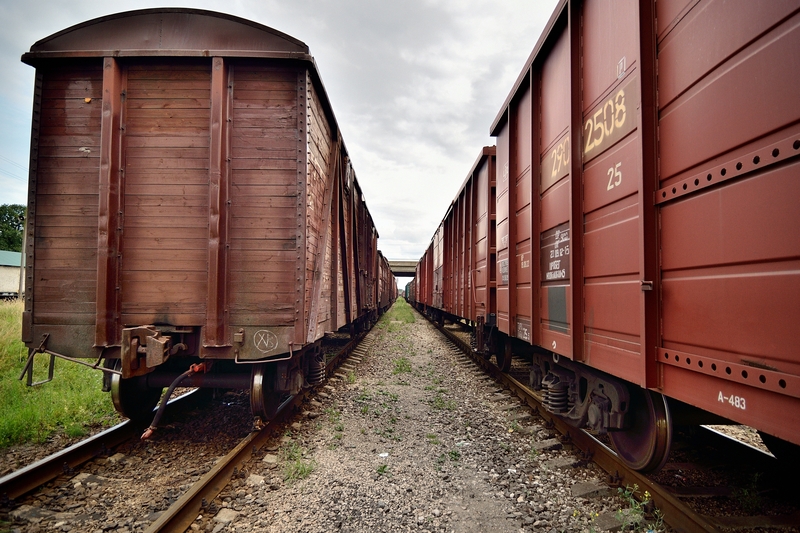Keep Your Sofa Safe: Expert Insights on Long-Term Storage
Posted on 04/06/2025
Keep Your Sofa Safe: Expert Insights on Long-Term Storage
Storing your sofa for an extended period requires more than just moving it into a garage or storage unit. If you want to maintain the quality and longevity of your cherished couch, knowing the right steps is essential. In this exhaustive guide, industry professionals share their top advice for sofa protection, preparation, and placement--ensuring comfort and freshness for years to come.

Why Proper Sofa Storage Matters
Sofas are more than just seating--they're investments in comfort, style, and the ambiance of your living space. When not in use, whether due to a move, renovation, or downsizing, safeguarding your sofa's integrity becomes paramount. Improper long-term storage can result in:
- Mold and mildew growth from trapped moisture.
- Deterioration of upholstery--fading, cracking, or tearing.
- Structural damage like sagging frames and broken legs.
- Pest infestations that cause unpleasant smells or health hazards.
- Stains and dust accumulation reducing visual appeal and hygiene.
Protecting your sofa in storage ensures it's ready for use the moment you need it again, saving you money and preserving sentimental value.
Preparing Your Sofa for Long-Term Storage: Step-by-Step
1. Clean Thoroughly Before Storage
Cleaning is the cornerstone of long-term sofa preservation. Dirt, oils, and crumbs can attract pests and foster mold. Follow these best practices:
- Vacuum all surfaces, including under seat cushions and crevices.
- Spot-clean stains--use a mild detergent suited for your sofa's fabric.
- For leather sofas, wipe with a damp cloth and apply conditioner to prevent cracking.
- Allow the entire sofa to dry completely to avoid moisture issues in storage.
2. Disassemble If Possible
Reducing your sofa to its component parts offers several advantages:
- Easier transport and handling reduces the risk of nicks and dents.
- Minimizes space usage in your storage unit.
- Less stress on connections and joints, prolonging the frame's lifespan.
Expert Tip: Label hardware and components in sealable bags. Tape them securely to the frame or store in a designated box.
3. Protect With Appropriate Covers
Preserving your sofa during storage demands using the right materials:
- Soft, breathable fabric covers, such as cotton or specialized furniture blankets, allow air circulation and prevent mold. Avoid plastic wrap directly on upholstery--it can trap moisture.
- If using plastic sheeting, place it loosely over the fabric and consider cutting small ventilation holes.
Never store a sofa uncovered, as dust and debris can settle into the upholstery and be hard to remove later.
Selecting the Right Storage Facility for Sofa Safety
Climate-Controlled Storage: A Must for Long-Term Sofa Storage
Don't underestimate the impact of environmental conditions. Humidity, temperature fluctuations, and exposure to sunlight can cause severe damage:
- Wooden frames may swell, warp, or crack in unregulated climates.
- Leather upholstery dries out and splits without controlled humidity and heat.
- Excessive moisture fuels mold and mildew no matter the sofa's material.
Choose a climate-controlled storage unit for optimal sofa preservation over several months or years. Maintaining a stable environment (roughly 55-75?F and 30-50% humidity) ensures the integrity of both structure and fabric.
Security Features
- Modern surveillance systems and on-site personnel prevent theft or vandalism.
- Individual unit alarms and controlled access provide peace of mind.
Ask about pest control procedures to ensure your sofa is safe from rodents or insects that thrive in storage areas.
Transporting Your Sofa Safely to Storage
Best Practices for Sofa Transport
Moving your sofa requires as much care as storing it. Consider these expert-recommended strategies:
- Wrap corners and delicate parts using foam pads or moving blankets to avoid abrasions and rips.
- Lift with proper technique--always keep your back straight and bend your knees.
- Secure the sofa in your vehicle or trailer to prevent sliding or toppling during transport.
- Avoid stacking heavy items atop the sofa, which could crush cushions or frames.
Arranging Your Sofa Inside the Storage Unit
- Elevate your sofa on wooden pallets or blocks. This protects the base from any water leaks and improves airflow to prevent moisture buildup.
- Keep the sofa off external walls to minimize temperature variability exposure.
- Leave space around the sofa--don't pack tightly with other furniture, which can trap humidity and limit air circulation.
- Store cushions separately if possible, wrapped in fabric covers. Position them upright to help retain their shape.
Special Storing Tips for Different Sofa Materials
1. Fabric Upholstered Sofas
- Remove and clean all removable covers.
- Use fabric-friendly covers or blankets for protection.
- Place silica gel packets nearby to absorb excess moisture and deter mildew growth.
2. Leather Sofas
- Clean and condition leather before storage to keep it supple.
- Never cover leather with plastic directly. It traps humidity and causes stickiness and deterioration.
- Ensure excellent ventilation in the storage area--leather needs to breathe!
3. Wooden or Antique Sofas
- Apply wood polish or wax to prevent drying and cracking.
- Avoid resting weight on carved or delicate parts.
- Wrap in acid-free paper before using blankets for peak antique protection.
Preventing Damage During Extended Storage
1. Moisture Control
- Monitor humidity levels in the storage unit--use a hygrometer if possible.
- Use desiccant packs or dehumidifiers for prolonged storage in damp climates.
2. Pest Deterrence
- Check storage unit regularly for signs of rodent or insect entry.
- Never store food or scented items near your sofa.
- Use all-natural repellents (lavender sachets, cedar blocks) to discourage bugs safely.
3. Regular Check-Ins
- Visit your storage unit every 1-2 months to inspect the sofa for early damage or infestation signs.
- Reapply conditioner/polish as necessary and air out cushions if allowed.
How to Retrieve and Revive Your Sofa After Storage
When it's finally time to reintegrate your sofa into your living space, follow these revival tips:
- Remove all coverings and air out the sofa outdoors for several hours if possible--this dissipates trapped odors and restores freshness.
- Vacuum and wipe down surfaces once more prior to use.
- Inspect for signs of damage or mold and spot-treat accordingly before arranging in your home.
- Give cushions a good fluffing and reshaping for maximal comfort.

Frequently Asked Questions about Long-Term Sofa Storage
1. What's the best way to store a sofa for a year or more?
The best long-term sofa storage combines a thorough initial cleaning, use of breathable covers, and storage in a climate-controlled environment. Elevating the sofa and regular monitoring ensures continued safety and quality.
2. How can I prevent my sofa from smelling musty?
- Ensure the sofa is completely dry before storage.
- Use odor absorbers like baking soda packets or activated charcoal bags in the unit.
- Opt for breathable covers and avoid plastic that retains moisture.
3. Can I store a sofa on its side or back to save space?
Storing a sofa upright, on its side, or back is risky as it places undue weight on frames and joints, potentially distorting its structure. Always store sofas as they were intended--upright, properly supported, and flat on their base.
4. Is it safe to stack boxes on my sofa in storage?
No, stacking heavy objects on your sofa can lead to indentation, warping, or permanent crushing of the cushions and frame.
Summary: Keep Your Sofa Safe for the Long Haul
Proper long-term storage of your sofa is a detailed process that pays off in the long run. By implementing these expert-approved steps for protecting, cleaning, covering, and storing your couch, you safeguard your investment and ensure lasting comfort. Whether storing for six months or several years, following this guide preserves not just the physical integrity but also the joy your sofa brings to your home.
Invest in the right storage, follow professional strategies, and enjoy a like-new sofa whenever you need it again!



